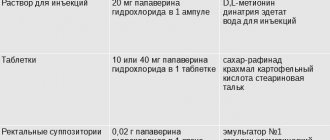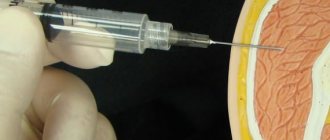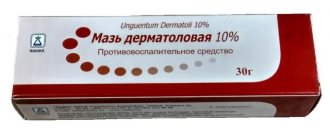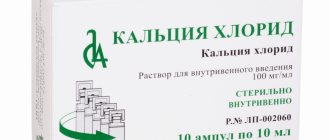Irritable bowel syndrome (IBS) occupies a leading place among functional gastrointestinal disorders. In accordance with international consensus (Rome III criteria), IBS is defined as a complex of functional (i.e., not associated with organic intestinal damage) disorders, the main clinical symptoms of which are abdominal pain and/or abdominal discomfort at least three days a month for a total duration of at least 12 weeks over the past 6 months, accompanied by two of three signs: a decrease in symptoms during bowel movements, a change in the frequency and shape (appearance) of stool [1, 2].
Depending on the nature and combination of clinical symptoms, there are four main variants of IBS [1–4]: • variant with a predominance of constipation (IBS-C): hard or fragmented stools in more than 25% and liquid, pasty stools in less than 25% of cases. number of bowel movements; • variant with a predominance of diarrhea (IBS-D): liquid (mushy) stool more than 25% and hard or fragmented stool - less than 25% of bowel movements; • mixed (IBS-M; intermittent): hard or fragmented stools in more than 25% and liquid (mushy) stools in less than 25% of bowel movements; • unclassified option (SRK-N).
With any of these options, the leading symptom of the disease is abdominal pain. The main mechanisms of pain development are due to visceral hyperalgesia and impaired intestinal motility. IBS is characterized by hyperkinetic motor disorders on the part of the circular layer of smooth muscles (SM) of the intestinal wall, responsible for intestinal tone, with the development of smooth muscle spasm. In the case of IBS with constipation, spasm of the SMC is accompanied by impaired intestinal transit [5, 6].
The motor function of the intestine is under the control of numerous regulatory influences (central, peripheral, enteric nervous systems and gastrointestinal peptides that determine the normal tone and contractile activity of the intestinal wall GM) [7–10]. At the final stage, the balanced functioning of the smooth muscle apparatus depends on the concentration of calcium ions in the cytoplasm of the myocyte. Calcium ions enter the myocyte through specialized membrane channels. The opening of calcium channels leads to an increase in calcium concentration, the formation of the actin–myosin complex and muscle contraction, and blocking of the channels is accompanied, accordingly, by a decrease in the calcium concentration in the myocyte and its relaxation [8]. Since smooth muscle spasm is one of the main components of abdominal pain in IBS, its elimination becomes a very urgent task, in solving which significant difficulties arise due to mixed mechanisms of occurrence. Treatment of IBS should be comprehensive, aimed at eliminating interdependent central and visceral negative effects [3, 4,6, 11]. Currently, there are no ideal means for such correction. The drugs of choice for relieving spasms of any origin and relieving pain, especially in functional disorders of the gastrointestinal tract (GIT), are myotropic antispasmodics (MS) [4, 6, 12, 13], which affect the final stage of the formation of hyperkinesia, regardless of its cause and mechanism .
It has long been noted that calcium channel blockers (nifedipine and verapamil), used in the treatment of cardiovascular diseases, have a relaxing effect on the gastrointestinal tract. This was the impetus for the creation of another group of modern effective MS - selective blockers of calcium channels in the gastrointestinal tract. The classic representative of this group is pinaveria bromide (Dicetel) [3, 4].
The purpose of the study was to evaluate the effect of Dicetel on the intensity of abdominal pain syndrome and dyspeptic symptoms in patients with IBS during a course of treatment.
Instructions for use
Dicetel is a myotropic antispasmodic that relieves spasms by relaxing the smooth muscles of the gastrointestinal tract.
The drug simultaneously works in three directions:
1. Relieves spasm by activating the production of calcium and potassium;
2. Does not affect the performance of the cardiovascular system;
3. Reduces the sensitivity of neural endings, reducing pain.
The drug is absorbed into the blood fairly quickly , reaching its highest concentration within an hour after taking the tablet. Almost completely binds to plasma proteins, providing quick results. Metabolized in the liver, after which the metabolites are eliminated to a large extent in the feces.
The advantage of Dicetel is that it can be taken by people with chronic diseases of the cardiovascular system. A muscle relaxant by nature, this drug has an exclusively local effect, relaxing the smooth muscles of the entire gastrointestinal tract, eliminating the risk of lowering blood pressure.
Indications for use
The drug is widely used in gastroenterology for the treatment of the following diseases and pathological processes:
spasmodic pain in the stomach and intestines caused by eating heavy foods (fatty, fried and smoked);- functional disorders of the entire digestive tract;
- spasms of the biliary tract;
- in the treatment of peptic ulcer (as part of complex therapy, as a muscle relaxant drug).
Dicetel is used in preparation for an x-ray examination of all gastrointestinal organs, which requires the administration of barium salts (the drug reduces the reaction of the gastrointestinal tract to barium, eliminating pain).
Mode of application
The tablets are taken during meals with plenty of liquid.
You should not chew or bite them, as the active components can significantly damage the mucous membrane of the esophagus.
Since the drug has different dosages, the number of doses also differs:
- Tablets with an active component of 50 mg are prescribed in several variations: 1 tablet three times a day, or 2 tablets in the morning and evening. The daily dose should not exceed 200 mg, since the likelihood of adverse reactions is high.
- Tablets with an active ingredient of 100 mg - the daily dose is 200 mg (2 tablets), divided into two doses: morning and evening during meals.
It is permissible to increase the daily dosage by the amount determined by the doctor. You should not take the tablets with milk or sparkling water, as this may provoke a reaction during which Dicetel is metabolized earlier than expected, reducing the drug's effectiveness.
In the case where the use of the drug is explained by preparation for an x-ray examination, the patient is asked to start taking Dicetel 3-4 days before the examination date. Prescribe 1 tablet 2 times a day. The maximum permissible daily dose is 300 mg. If it increases on its own, signs of overdose may develop.
If an overdose is diagnosed, the patient experiences symptoms such as:
- stool disorder in the form of prolonged diarrhea;
- feverish state, tachycardia;
- dizziness and loss of consciousness;
- excessive gas formation.
In this case, symptomatic treatment is required, which consists of washing the gastrointestinal tract, as well as taking sorbents. At the time of elimination of the overdose, the drug is completely eliminated.
Pay special attention!!! Under no circumstances should you use tablets with a dosage that does not coincide with the doctor’s recommendations. If you split a 100 mg tablet in half, you will not be able to get an equal dose of 50 mg.
In addition, a damaged membrane and direct contact of the active component with the mucous membrane of the oral cavity and esophagus can provoke bleeding, as well as erosive lesions.
Composition and release form
Dicetel is produced in the form of biconvex tablets, orange in color, with a stripe in the middle. There are two types of dosage: 50 mg and 100 mg. Depending on this indicator, the amount of the active substance changes: pinaverium bromide. Auxiliary components:
- talc;
- silica;
- lactose;
- starch;
- artificial dye.
Tablets are packaged in plastic blisters of 20 pcs. One package contains one blister.
Drug interactions
During the laboratory tests, no adverse reactions from drug interactions were detected. The drug is completely tolerant to any type of medication, without causing pathological changes in the body.
The simultaneous use of Dicetel and anticholinergic drugs is allowed, which increases the effectiveness of the antispasmodic several times.
The drug does not counter-react with other medications, therefore it is approved for use in complex therapy, as well as for people who are forced to constantly take medications (for diabetes, pancreatitis, cholecystitis).
results
Characteristics of pain syndrome
The initial level of IB was almost the same in patients with IBS-C and IBS-M. The intensity of abdominal pain in both groups before treatment with Dicetel corresponded to an average of 6.7 and 6.3 points with fluctuations from 3 to 8 points. After 7 days of treatment, IB decreased to 4.0 points in the first group and to 4.2 in the second, i.e., by an average of 59.7 and 66.7%. After a 2-week course of treatment, IB in group 1 was 3.1 points, in group 2 – 2.7 points. The overall level of reduction in IB was 46.3 and 43%, respectively, compared to the initial indicators. Thus, the degree of reduction in IB in the groups was also almost the same. The degree of reduction in abdominal pain by the end of treatment in accordance with the criteria for evaluating the effectiveness is presented in the table.
. Results of treatment of patients with IBS with Dicetel, n (%).
As can be seen from the table, the frequency of achieving excellent and good results was comparable in both groups and in total amounted to 50%. Satisfactory results in IB in the groups were not the same: in the 1st group - 33.3%, in the 2nd - 18.2%. Thus, in total, we observed positive dynamics of IB during treatment in 83 and 68% of patients in the two groups, respectively. In 16.7 and 31.8% of cases in groups 1 and 2, no effect of Ditsetel on abdominal pain was noted.
In parallel with the reduction in pain, a decrease in the severity of flatulence was also noted, but the intensity of this symptom could not be quantified.
Characteristics of dyspeptic syndrome
IBS occurred predominantly with constipation in 24 patients. The nature of the stool in these patients corresponded to the diagnostic criteria (Rome III criteria) for IBS-C. In this group, by the end of the course of treatment, independent, although irregular, stool appeared in 11 (45.8%) patients, in the remaining patients constipation still remained persistent . In group 2 (IBS-M), incomplete normalization of stool (both constipation and diarrhea) was observed in 8 (36.3%) patients. It was possible to evaluate the ODI more clearly: the sum of points of all dyspeptic symptoms, including stool characteristics. Thus, the ODI before treatment in both groups was comparable and was estimated at 17, 3 and 19.3 points, respectively. After 7 and 14 days, moderate positive dynamics were noted. By the end of treatment, ODI was 12 points in both groups, a decrease of approximately 30 and 40%.
Tolerability assessment
In 40 patients, Dicetel was well tolerated without the development of side effects. In six cases, increased abdominal pain and flatulence were observed, which required discontinuation of the drug. However, after the discontinuation of Dicetel, these phenomena did not stop, and the need arose to use anticholinergics and analgesics. Additional examination did not reveal organic reasons for increased pain, so we believe that the reason for the increase in pain intensity was not the side effects of Dicetel, but its lack of effectiveness.
Side effects
The drug is to some extent capable of influencing the production of interferon bodies responsible for immunity. Therefore, frequent and prolonged use can provoke a weakening of the immune system.
On the part of the digestive system, side effects are noted by such manifestations as:
nausea and vomiting;- abdominal pain;
- insomnia;
- lack of appetite;
- drowsiness and loss of strength;
- presence of bleeding of the esophagus (iron taste in the mouth);
- diarrhea.
Quite rarely, Dicetel provokes an allergic reaction, which is accompanied by such manifestations as:
- angioedema - characterized by the accumulation of fluid in the cells of the body, which provokes swelling and cessation of heart contraction;
- urticaria - a skin rash accompanied by severe itching;
- anaphylactic shock – develops due to the body’s immediate reaction to repeated introduction of an allergen, characterized by holding one’s breath and lack of heartbeat.
In 98% of cases, Dicetel is well tolerated by patients, even in old age and in the presence of chronic diseases.
Contraindications
The list of contraindications is extremely small, which makes it possible to use the drug in any situation. The most categorical contraindications include the following diseases and pathological conditions:
- hypersensitivity to pinaverium bromide (history of drug allergies);
- with acute deficiency of lactose and galactose, as well as with disorders of glucose-galactose malabsorption.
It is not recommended to use the drug under the age of 18, since there is no data on the possibility of pinaverium bromide influencing the formation and development of the body, especially during puberty.
Dicetel should be used with extreme caution by people suffering from gastric and duodenal ulcers. Pathogenic microflora can aggravate the absorption of the drug, making the treatment ineffective.
During pregnancy
Taking Dicetel during pregnancy is permitted only if the expected benefit outweighs the potential risk to the health of the mother and child. There is no official data on exactly how the drug affects fetal development. There is an assumption that due to the high bromine content, taking the medicine in the last stages of pregnancy can provoke premature birth, as well as pathological abnormalities in the fetus, such as tachycardia and arrhythmia.
It is also impossible to exclude the possibility of a high risk of the active component entering the newborn’s body through milk. When studying the absorption of Dicetel components into breast milk, no reliable data were obtained, so it is better to refuse its use during lactation or stop breastfeeding.
conclusions
1. The intensity of abdominal pain is the same in patients with IBS-C and IBS-M. Constipation does not appear to be an additional contributor to pain in patients. 2. The degree of reduction in pain intensity under the influence of Dicetel in patients with IBS with different clinical course is almost the same. 3. Dicetel in the form of monotherapy with intracourse use gives a positive clinical effect in more than 50% of patients, regardless of the clinical variant of IBS. 4. In some cases, a decrease in pain intensity during treatment with Dicetel is accompanied by normalization of stool without additional use of laxatives.








